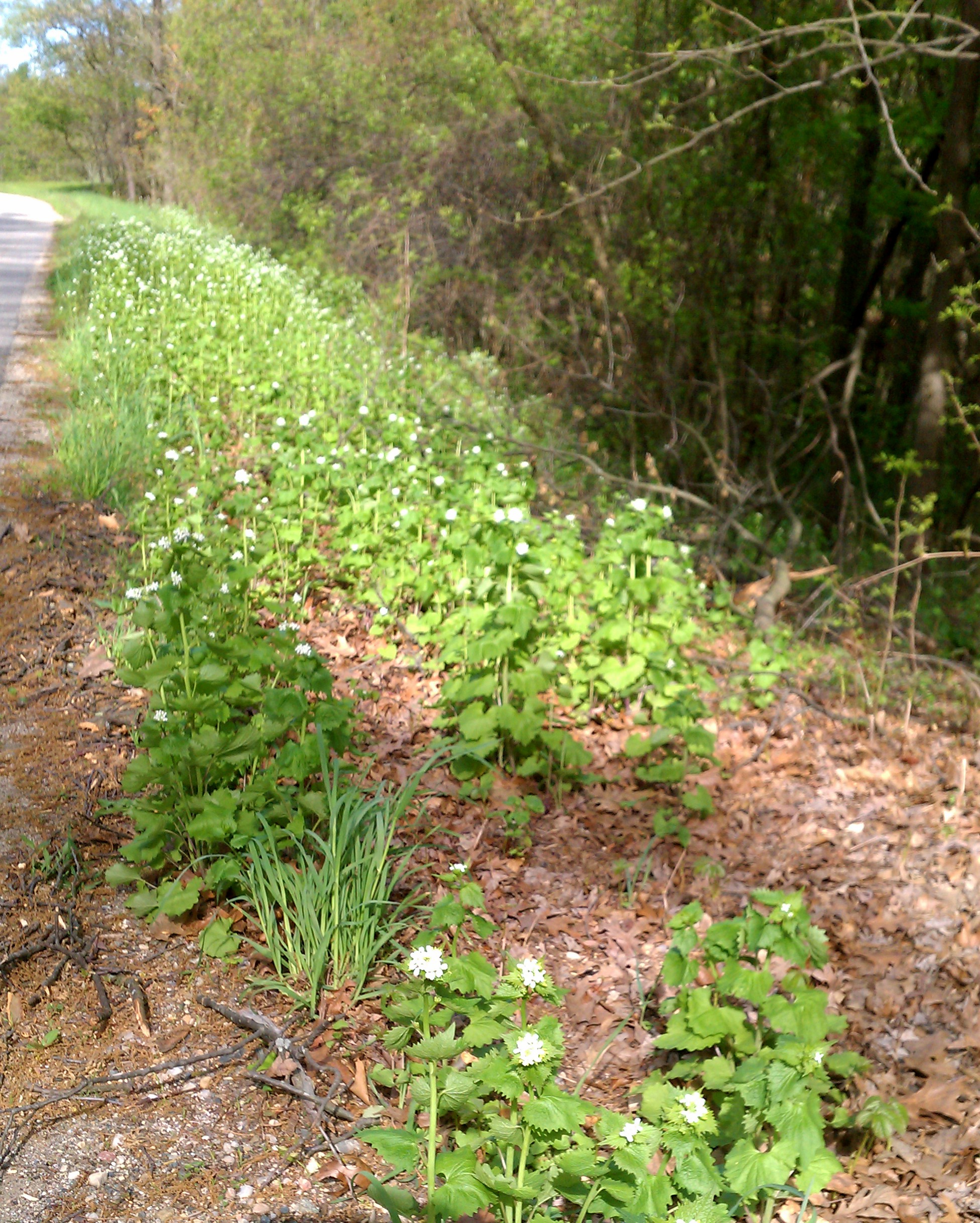Garlic mustard: Michigan’s worst woodland weed
This invasive weed is rapidly taking over the forest floor, replacing important habitat for plants and animals alike.

Garlic mustard (Alliaria petiolata) has become one of Michigan’s most notorious woodland invasive weeds. Its thrifty, biennial habit allows the plant to optimize growth in early spring months before native vegetation greens up. One mother plant can produce thousands of seeds that may remain viable for up to 10 years and while it is growing, the roots of the plant produce chemicals in the soil that help it out compete native plants.
A native to Europe, garlic mustard was originally introduced in North America by settlers for its “proclaimed” medicinal properties and use in cooking. (Just break a root or leaf and take a whiff.) Unfortunately, because of its invasive habit, garlic mustard is rapidly dominating the forest floor, changing woodland habitat for plants and animals alike. Given the chance, it will also invade the home landscape and even take over patches of existing groundcover.
Control measures

It is estimated that garlic mustard seed can survive for more than 10 year in the soil, therefore, any control method selected must be repeated for several years until residual seeds from previous plants have germinated or otherwise degraded. Smaller garlic mustard infestations can be controlled with a watchful eye and rigorous hand pulling during spring before other vegetation greens up, with early spring before flowering being ideal.
The plants are relatively easy to pull but they are brittle, so be sure you are lifting the entire plant out of the ground and not just breaking off the top. Remove plants completely from the site to avoid rerooting and seed production. Even second year plants that are not flowering at the time of removal may flower and produce viable seed as they dry down.
Bag and dispose of pulled plants with municipal waste headed to a landfill or incinerator. Invasive plant species are permitted to be disposed of in this manner in Michigan, unlike other landscape waste. Burning of dried plants may also be an acceptable form of disposal assuming seeds are not present or developing at the time of drying and burning is permitted in your area. Composting or disposal with yard waste pickup programs are not acceptable means of disposal as research has shown that some seeds can survive the composting process.
For larger stands, mowing is not advised, and many other mechanical methods may be more labor intensive than hand pulling (e.g., clipping and bagging or root slicing). Herbicides are an option in the early spring or late fall; however, timing can be tricky as the plants need to be actively growing, usually with temperatures above 50 degrees Fahrenheit. Be careful to avoid exposing native vegetation to herbicides, and depending on the habitat, preemergence herbicides may not be advised (e.g. trifularlin, found in Preen Garden Weed Preventer and other products). As with any pesticide application, it is imperative to read and follow all labeled instructions to ensure maximum efficacy as well as personal and environmental safety.
The bottom line is that people who appreciate the native beauty of their woodlands and would not like to see this aggressive weed move into their landscape beds should keep a vigilant eye and remove it as soon as it appears. You can also get involved by reporting garlic mustard and other invasive species to the Midwest Invasive Species Information Network either through their online reporting tool or their smartphone app. Some local areas may also advertise “garlic mustard pulls” to help park lands and other valuable areas tackle the problem.



 Print
Print Email
Email